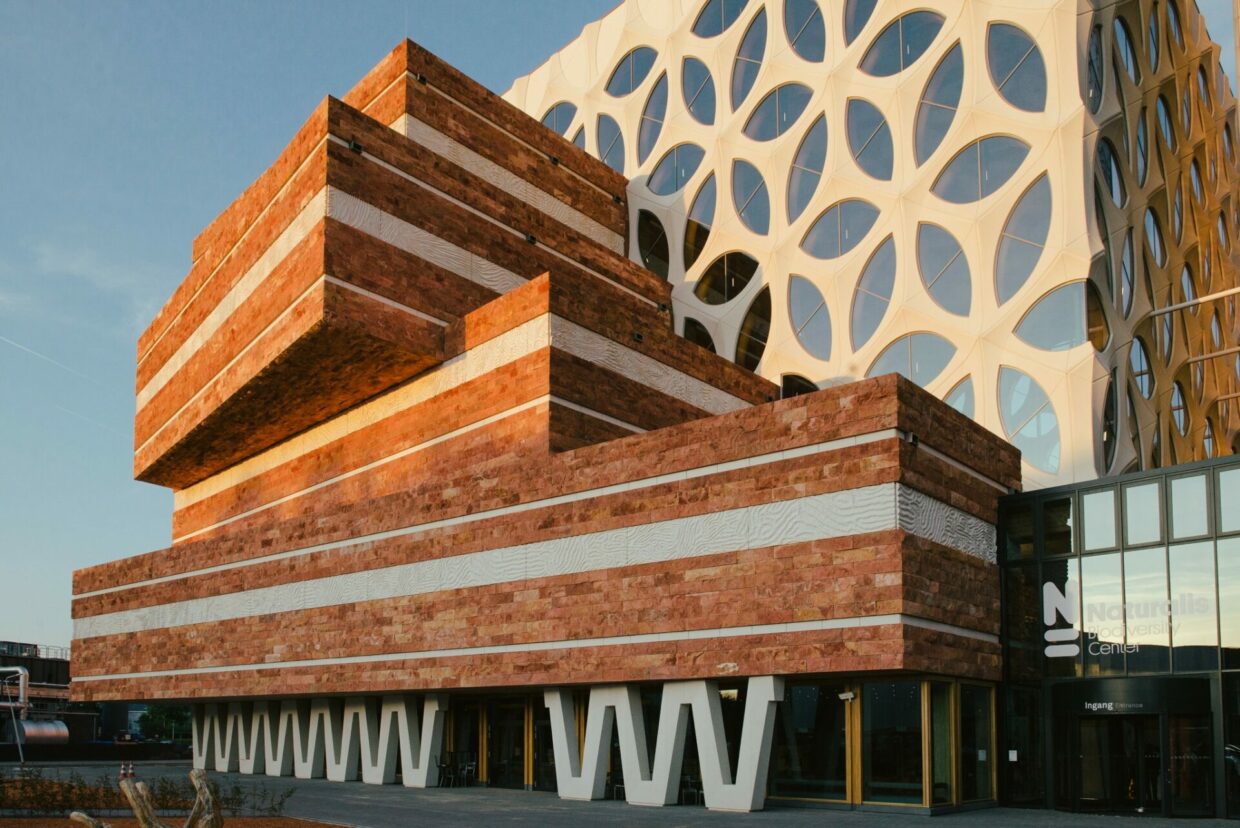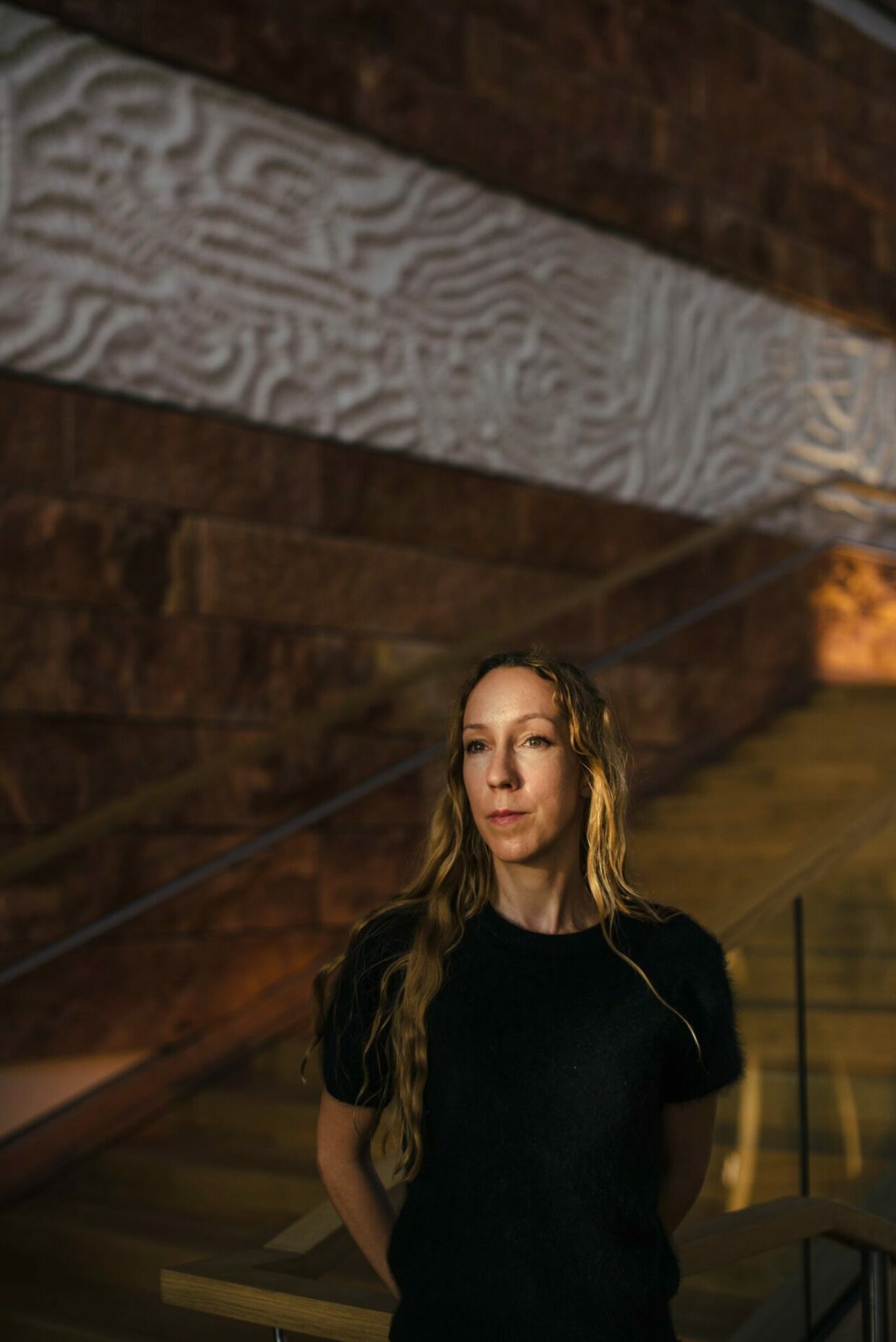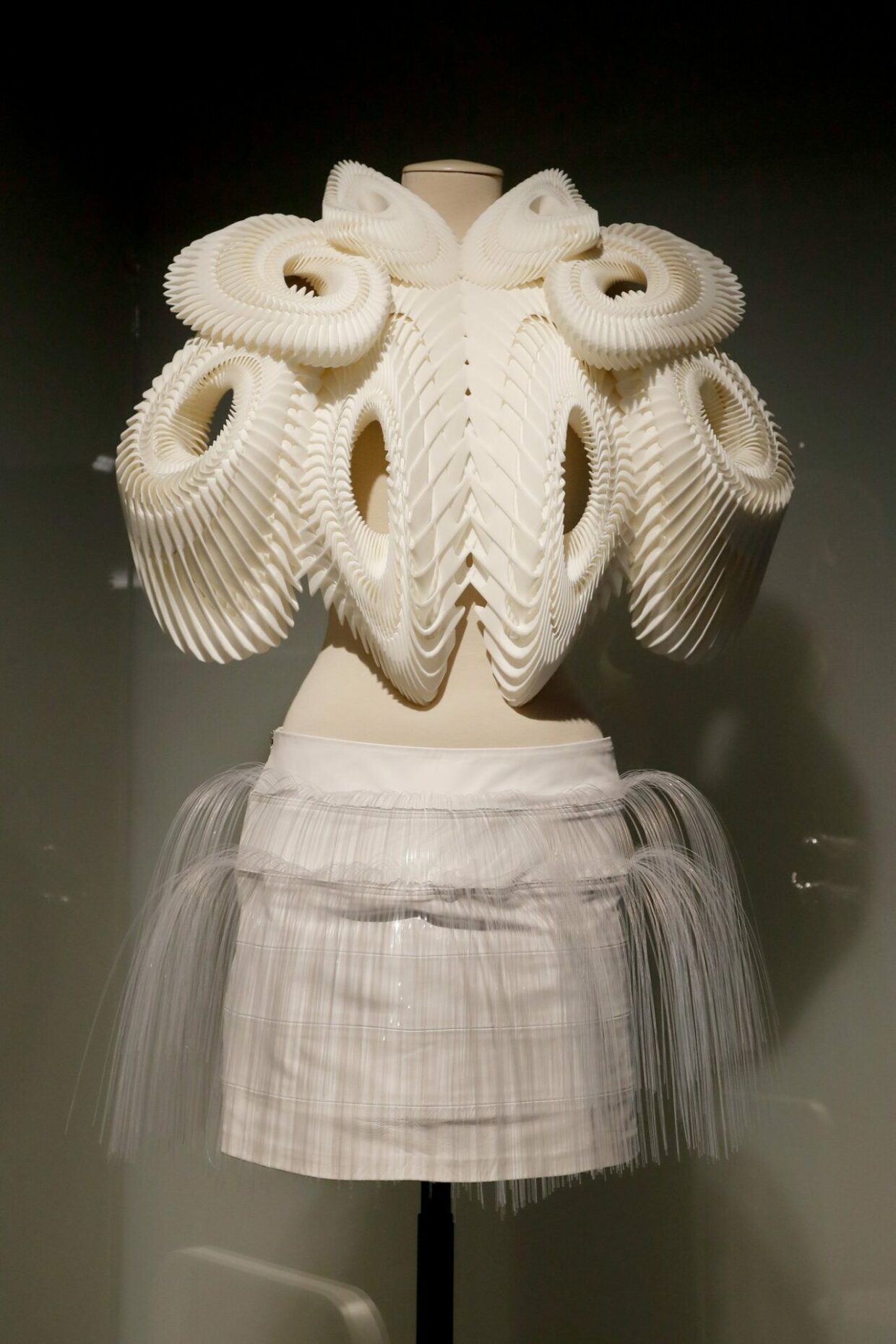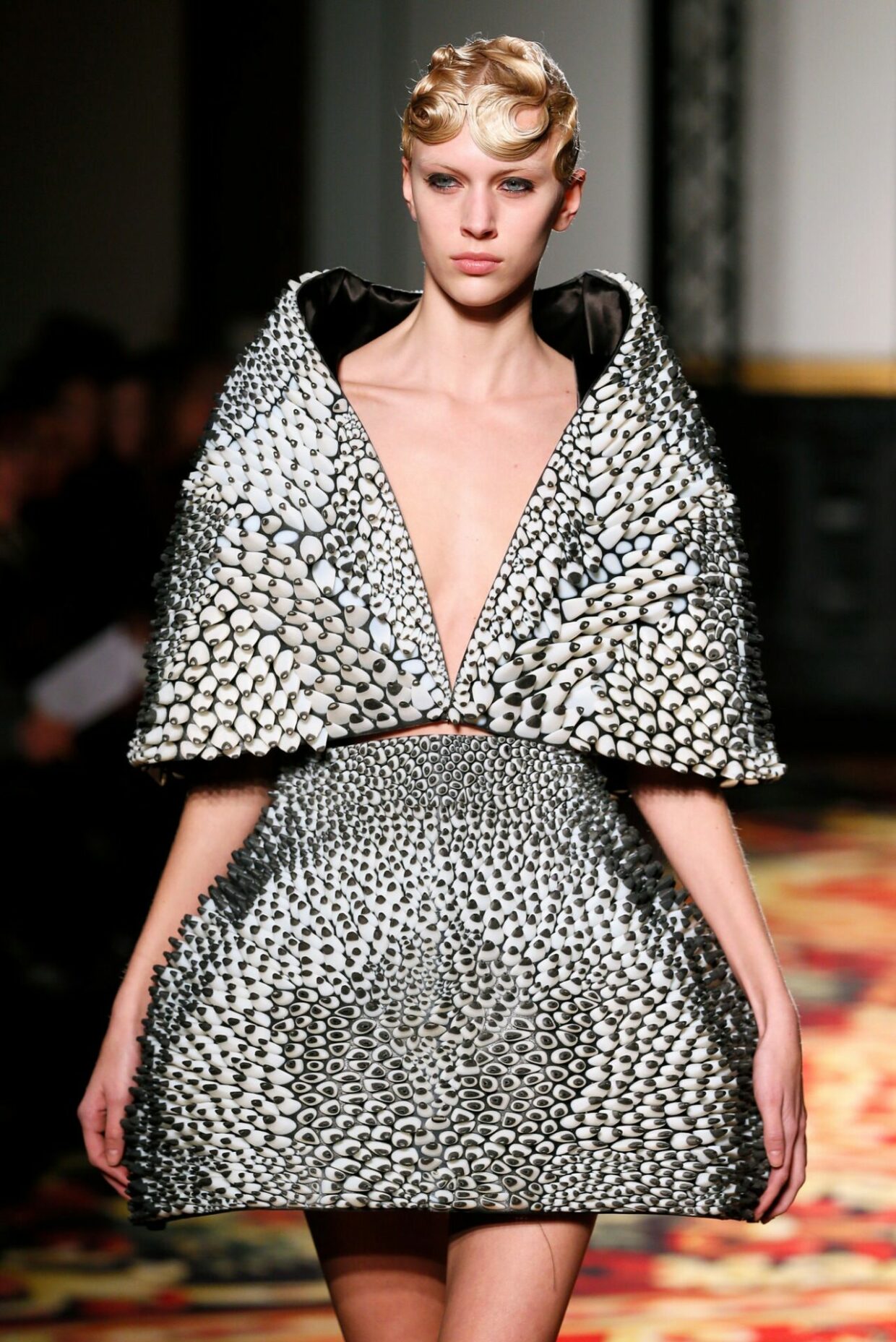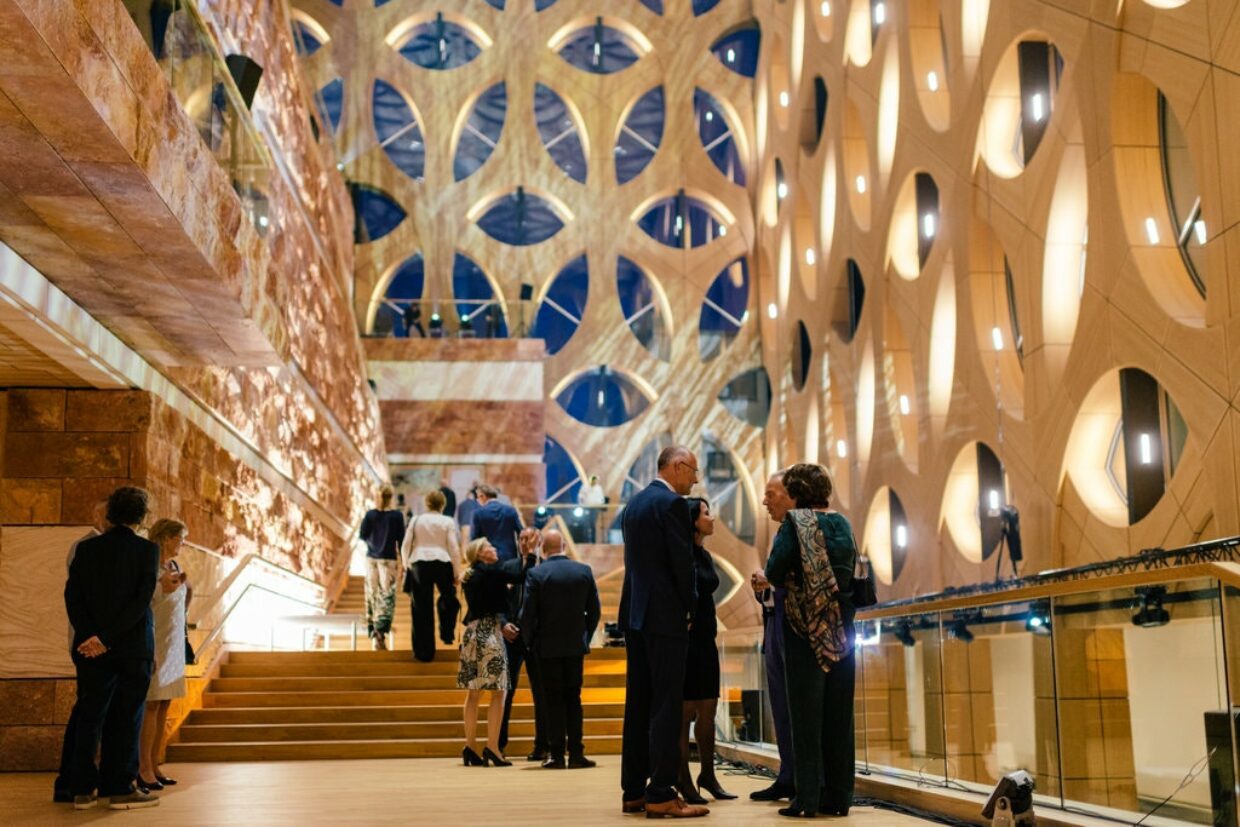Iris van Herpen Designs for Nature
Oct. 1, 2019
By: Dana Thomas
LEIDEN, the Netherlands — The imposing red stone edifice rises from an otherwise empty area in this old Dutch city like a mesa in the American West, bound — round and round — with what looks like a white ribbon.
Get closer, though, and you will discover that the ribbon is actually about 3,300 seamless feet of white concrete friezes with fossil-like patterns inspired by erosion on the volcanic island of Lanzarote, in the Canaries. It seems an extraordinary accessory for the building, until you learn it was designed by the 35-year-old Dutch couturière Iris van Herpen, for the new addition to the renovated Naturalis Biodiversity Center, the Netherlands’ natural history museum.
“I don’t see a difference between architecture and fashion,” Ms. van Herpen said, taking in the finished building for the first time on a sunny July morning. “They can really talk to each other.”
There are fashion designers who find inspiration in museums. And designers who underwrite the renovation of museums. And designers who open their own museums. But there are few, if any, who have worked directly with architects to create a museum.
Ms. van Herpen, however, is not your ordinary designer. Several times she has visited the Large Hadron Collider, the world’s largest particle accelerator, at CERN, the European Center for Nuclear Research, near Geneva, and used what she saw and experienced there to inform her work. In 2011, she collaborated with the London-based architect Daniel Widrig to create a white 3-D-printed bolero in swirling nautilus shapes. In 2012, she was the first (with the help of the American-Israeli architect Neri Oxman of the Massachusetts Institute of Technology’s Media Lab) to produce a fully flexible 3-D printed dress. And in July, she partnered with Anthony Howe, an American kinetic sculptor, to produce the closing piece of her couture show in Paris: a corset minidress with feather wings that spun as the model walked.
“Calling Iris a designer is nomenclature,” Mr. Howe said backstage before that show at the Élysée Montmartre. “She’s an artist who happens to make things that fit on the human form. Yes, it has everything to have to do with a model, a human form. But what she does is way beyond that. Way beyond.”
Still, Ms. van Herpen does produce clothes one can wear — about 100 pieces a year, each of which cost from $20,000 to more than $100,000, and are purchased and worn by prominent women. Cate Blanchett walked the red carpet last year as jury president of the Cannes Film Festival in a fluttering laser-cut and laser-bonded van Herpen gown that had been made for her and lent for the occasion. Much of the rest of the designer’s work ends up in museum collections, or retrospectives; she has two new exhibitions pending: in 2021 at the Musée des Arts Décoratifs in Paris, and in 2022 in an undisclosed location.
Her existence is monastic: the studio, a rough-hewed space in an old warehouse at Amsterdam’s former lumber port, is small, spartan and staffed with a clutch of other millennials — mostly women. A former ballerina, Ms. van Herpen is lean, soft-spoken and reserved; she dresses in secondhand finds and wears little makeup. Branding and a global retail network are not part of her five-year plan. (She probably doesn’t have a five-year plan.) It is the addition of outside projects, like designing costumes for the Paris Opera Ballet or working on the biodiversity center’s renovation, that keep her engaged as well as afloat financially.
That’s why, when Neutelings Riedijk Architects of Rotterdam won the 2013 competition to renovate the original Fons Verheijen-designed museum, as well as to construct a new five-story, 400,000-square-foot addition, they emailed Ms. van Herpen — and she immediately agreed.
Michiel Riedijk, the project’s lead architect, said, “We wanted to evoke nature in all its elements — biodiversity, geology, tectonics — and not do so in a straightforward 19th-century manner.
“Hence, Iris.”
Her work, he said, embodies “the notion of permanent change,” and “the beauty of nature.” It has, he added, the same focus as the museum, with its collection of 42 million items (museum officials called it one of the world’s largest), from a T-Rex skeleton to butterflies.
The architects already had decided to clad the building, inside and out, with a rust-red travertine from Iran. “They showed me that stone and I fell in love with it,” Ms. van Herpen said. “The crystals, and color formations — it was beautiful. Then they showed me the skeleton of the facade, with the glass, and I wanted what I did to grow out of that.”
She proposed a series of custom panels, eventually totaling 263, made of concrete and white marble powder. She drew the designs by hand and on the computer, and once she figured out where to place each one, redrew the ends so they would meet flawlessly, like a good tailor properly joining plaids at the seams.
To the eye, the panels look a bit like fossils, and like lava flows — “like pleated silk, in a way,” Ms. van Herpen said. To the touch, they are cashmere soft, with a faint layer of fine dust. In essence, the building is like a body: The window frames are the skeleton; the travertine stone, the flesh, and Ms. van Herpen’s ribbon as tendons. “It really does feel alive,” she said.
“Fashion is very fast-paced, and there are fittings, and changes — the design is always evolving,” she said. “But this is such a long process. And you have to be sure about what you choose, because once you go into production, there is no way back. There is no way of changing your mind.”
She took in the building again, and shook her head. “I have even more respect for architecture than I did before,” she said with a laugh. “And I have realized I will never be an architect.”
Source: New York Times
